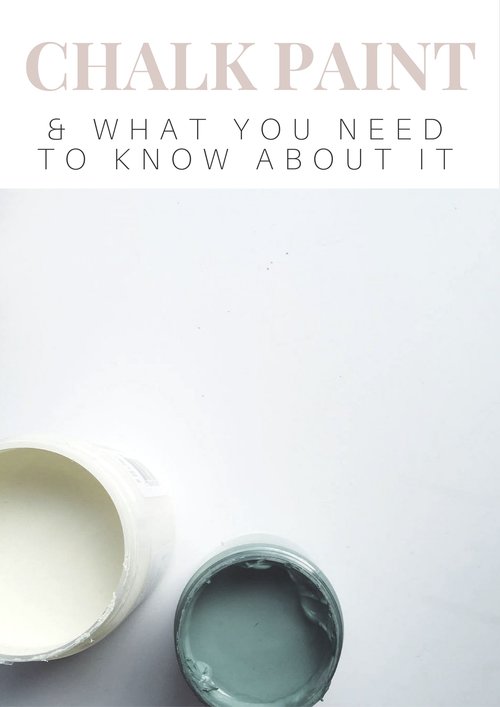What To Know Before Using Chalk Paint
Editor’s Note: This article was originally published in May 2016 and was updated in August 2017 because I wanted to revisit the topic!
Its kind of overwhelming trying to read about all the different ideas about chalk paint, so I tried to make a quick list of the biggest & most important (in my opinion) aspects of using it. A few of my favorite things about Chalk paint are:
1. No need to prime surface.
2. Matte Finish
3. Easy to distress
4. Quick Drying
Reasons not to use Chalk paint:
I think Kristi over at Addicted to Decorating did a great job explaining why she doesn't use chalk paint, in her post that can be found here.
These are a few of the biggest reasons i've heard for people not wanting to use it.
- Personal Taste: The finish of chalk paint is really similar to a matte latex paint, if you want it to be really shiny and modern looking.
- Prep work, if you're going to sand a piece anyway, to smooth it or to remove layers of peeling paint, then the "no need to sand" appeal of Chalk Paint(discussed below) won't really apply.
- The buffing/waxing process that is sometimes used with chalk paint can be really tricky, and lead to streaky finishes if done incorrectly.
Here's a break down of the process of using chalk paint:
Prep/Priming:
Chalk paint can be used without a primer coat, and without sanding or stripping stain off of a piece of furniture.
{I usually do use at least a medium grit sand paper before I paint a piece, just to make sure everything is smooth, but you don’t have to.}
Painting:
Chalk paint can be applied with a brush or a roller, sometimes its helpful to water down the paint a little before you apply it.
It should be applied in the same direction as the wood grain, if you’re looking for a smooth and modern finish.
If you’re going to apply a second coat of paint, do so right after the first coat dries.
Chalk paint can be distressed during the drying process, although after 48 hours the paint cures and is harder to distress well.
It dries (to the touch) really fast!
I like how easy it is to clean – since its water based – off of counters. I always seem to get at least a drop of paint somewhere that it isn’t supposed to be, so quick clean up was a BIG plus for me.
Along the same lines, chalk paint cleans out of brushes so much more easily than latex paint!
Sealant:
It’s important to cover a chalk painted surface with wax or polyurethane. If you choose wax, it will need to be re-waxed every few MONTHS, a polyurethane sealer will last YEARS.
Since I’m not sure if at some point a drink could spill on my dresser that I’m going to refinish, I’m going to go with polyurethane, just to be sure it’s sealed properly.
Lisa over at The Plucky Peacock recommended poly for at least the top part of the dresser, since it’ll probably get the most wear and tear when things are placed on top of it.




